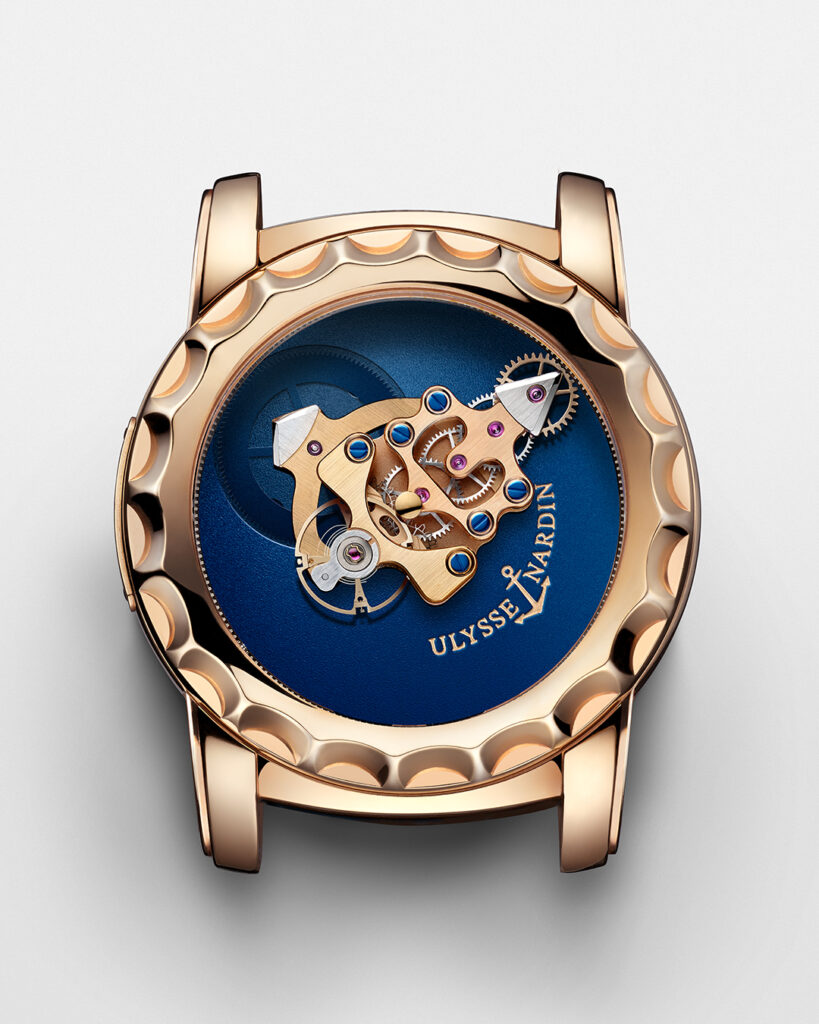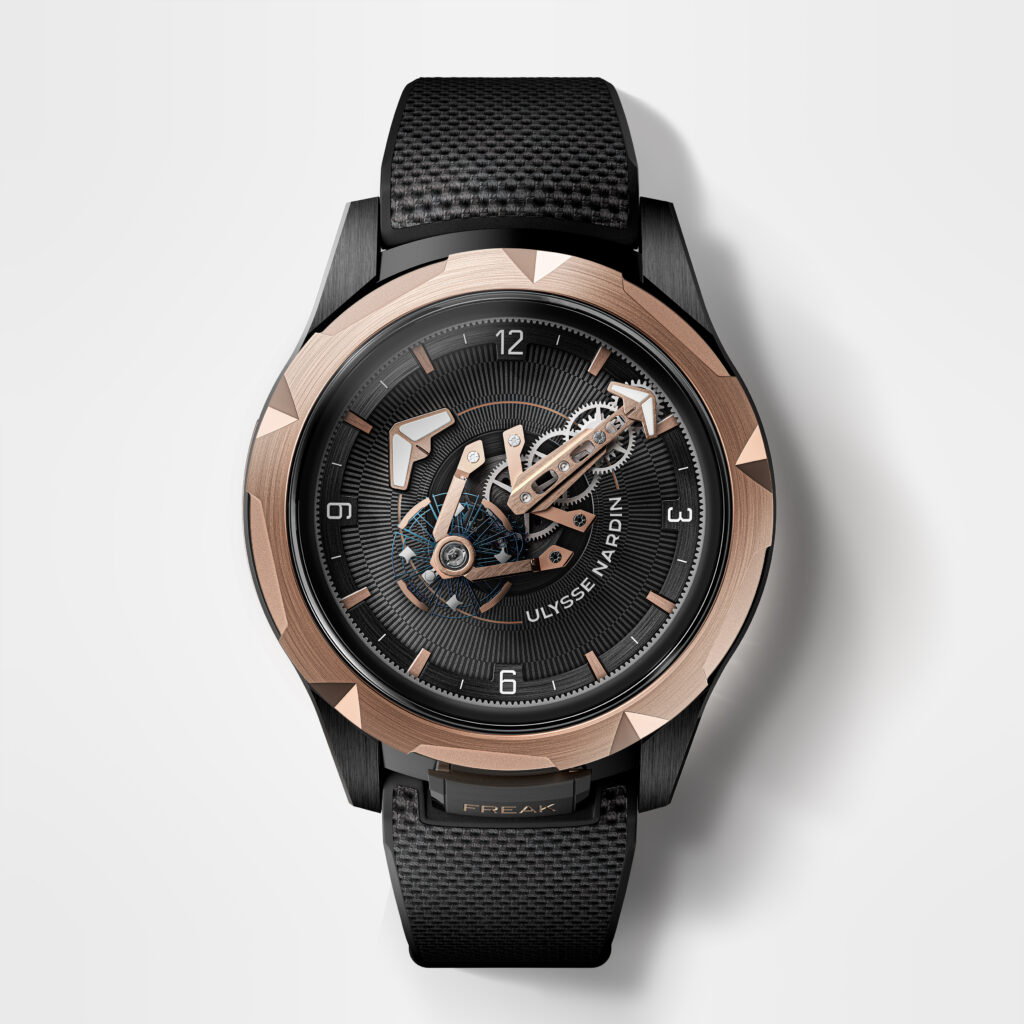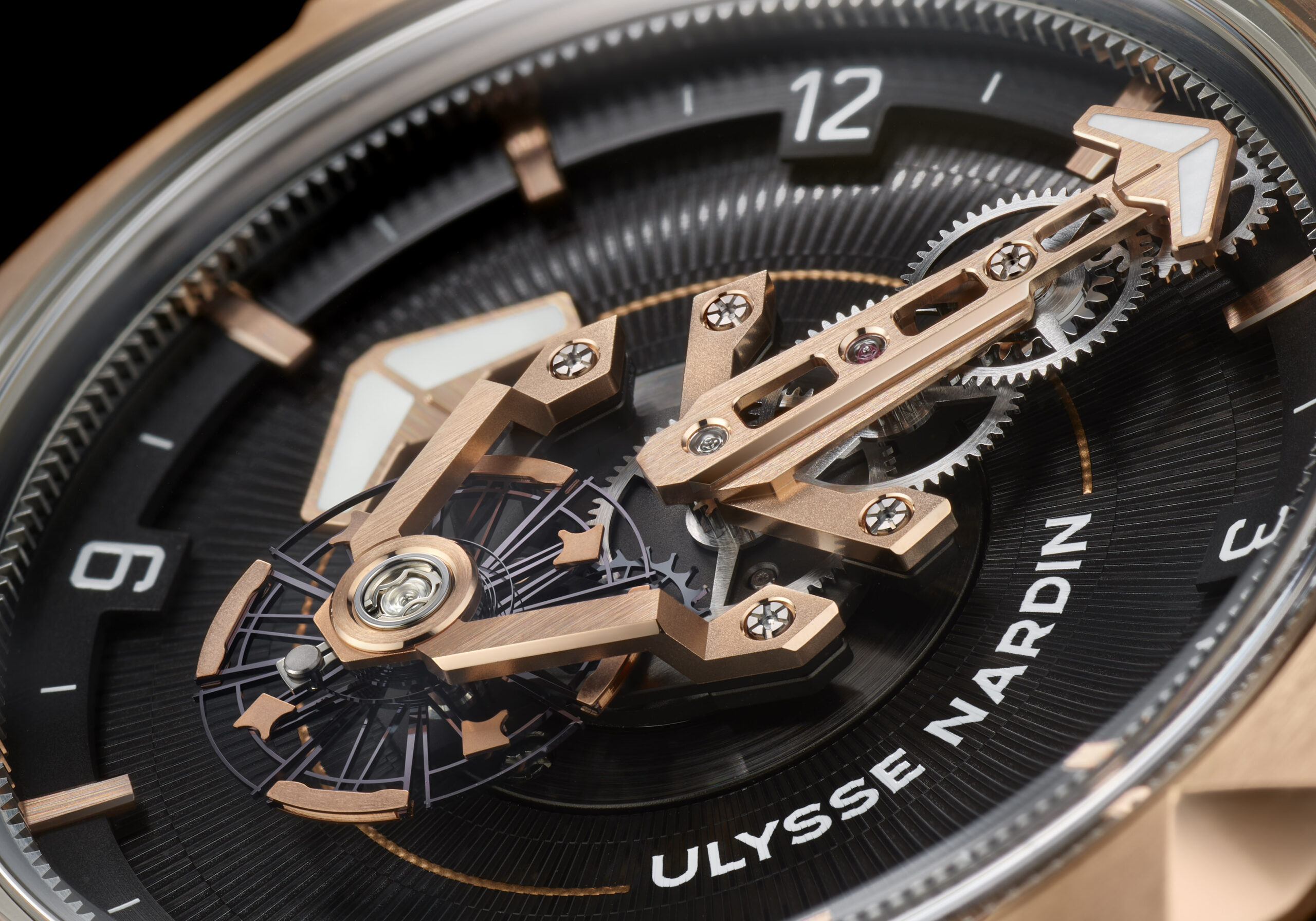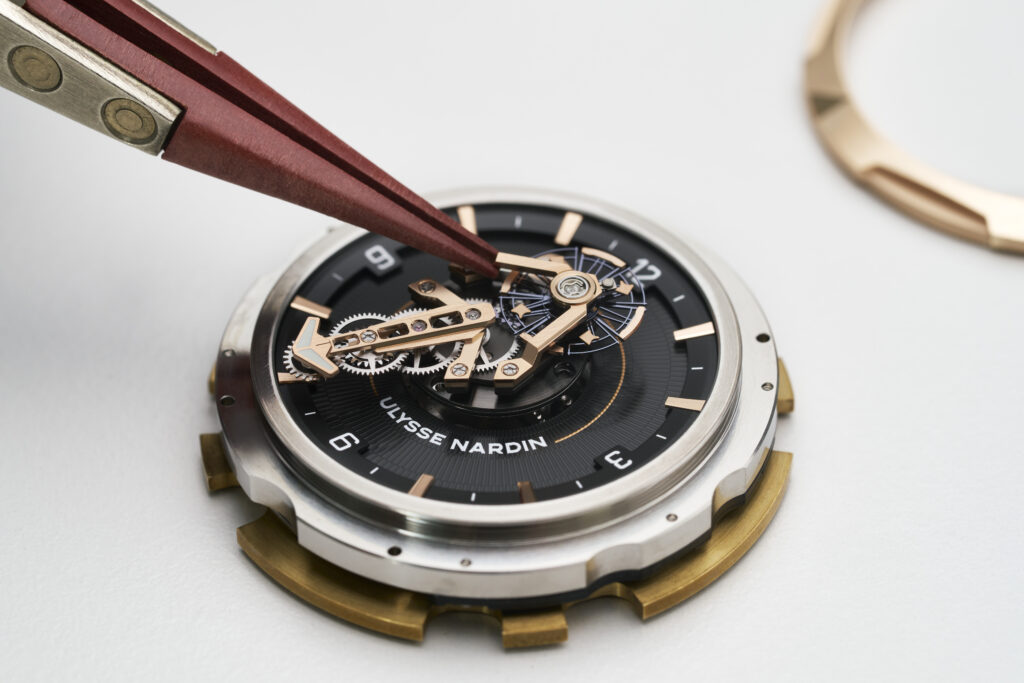At this year’s Watches and Wonders, Ulysse Nardin, like many brands, chose to show just one timepiece. And when it came to the unveiling of the Freak ONE, it became obvious why the brand decided that it should be a standalone.
When it was launched in 2001 at the Basel Watch and Jewellery Show by Ulysse Nardin owner, the late Rolf Schnyder and the legendary constructor Dr Ludwig Oechslin, the Freak shocked and intrigued the watch world in equal measures.
Like no watch seen before, it was without dial, hands or winding crown, and instead boasted two arrow-shaped movement components, arranged one on top of the other, rotating on the ‘watch face’ to indicate hours and minutes. Its unusual construction and appearance led to Schnyder naming it, perhaps to its detriment, the Freak.

While there was no crown, a huge fluted bezel had enough presence to indicate a purpose – namely to wind the mainspring and set the time. Apart from the startling construction, the watch also contained another debut, in the fact that it used silicon components for the very first time.
Since the beginning, the Freak has been a veritable skunkworks, debuting and hothousing new materials and designs. The buyers and wearers of the watch – of which there are more than 5,000 owning 37 different models – have all been involved in the development of the piece, testing the new technologies that are introduced into the watch that, since 2001, has filed more than 20 patents.
Over the past two decades, scores of brands have been inspired by the Freak, and the timepiece can be credited as the originator of “concept” watches with alternative time displays. Its main claim to fame, however, is as the first brand to experiment with silicon, today a common material especially in the production of hairsprings thanks to it being light and elastic, with low-friction properties and capable of being produced to extremely fine tolerances.
Now, with the Freak ONE, Ulysse Nardin has revisited the wonderment of the original Freak watch. According to Jean-Christophe Sabatier, Ulysse Nardin’s chief product officer. “You cannot overstate the impact of the Freak on Swiss watchmaking.

“The application of silicon in the escapement was a revolution. And its design was so disruptive… It was the industry’s first hyper-watch. To aficionados, in watchmaking there is only before the Freak – and after.”
Owned by luxury giant Kering from 2014, Ulysse Nardin went through a management buyout last year, regaining its independence. The Freak ONE is, according to Sabatier a reflection of this.
“[It] embodies our mindset,” he says. “The Freak ONE is a fresh expression of who we are. It’s a highly technical watch, but it also has intense emotional value. This is what makes the Freak so special and why true collectors love it.”
As a side note, there is an on-going debate over whether the Freak movement is a tourbillon or a carousel/karrusel. According to Justin Koullapis, technical editor of the Horological Journal, and recognised Freak aficionado Timm Delfs, the movement is a tourbillon.
In Koullapis’s words: “What differentiates tourbillons from karrusels is not, as is often claimed, the duration of the cycle, nor whether the balance is at the centre of the carriage or not.
“The revolving escapement patented by the Danish watchmaker Bahne Bonniksen, differs from Breguet’s tourbillon in that the karrusel’s carriage is driven independently of its escapement. By contrast, the carriage drive in the tourbillon is part of the power flow to its escapement.
“In the karrusel, if you were to break the drive to the carriage, the escapement would continue to tick, whereas in the tourbillon it would not. The carriage that forms the ‘minute hand’ of the Freak has a wheel at its tip that rolls along a fixed ring with internal teeth; any interruption of this action would clearly stop the watch, placing it, even this extreme form, among the tourbillons.”
Matter resolved!


